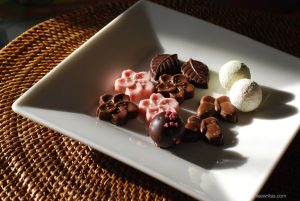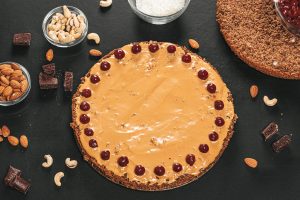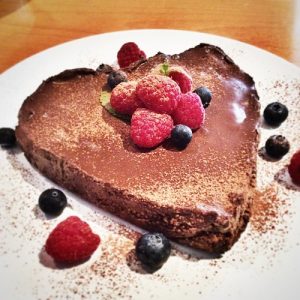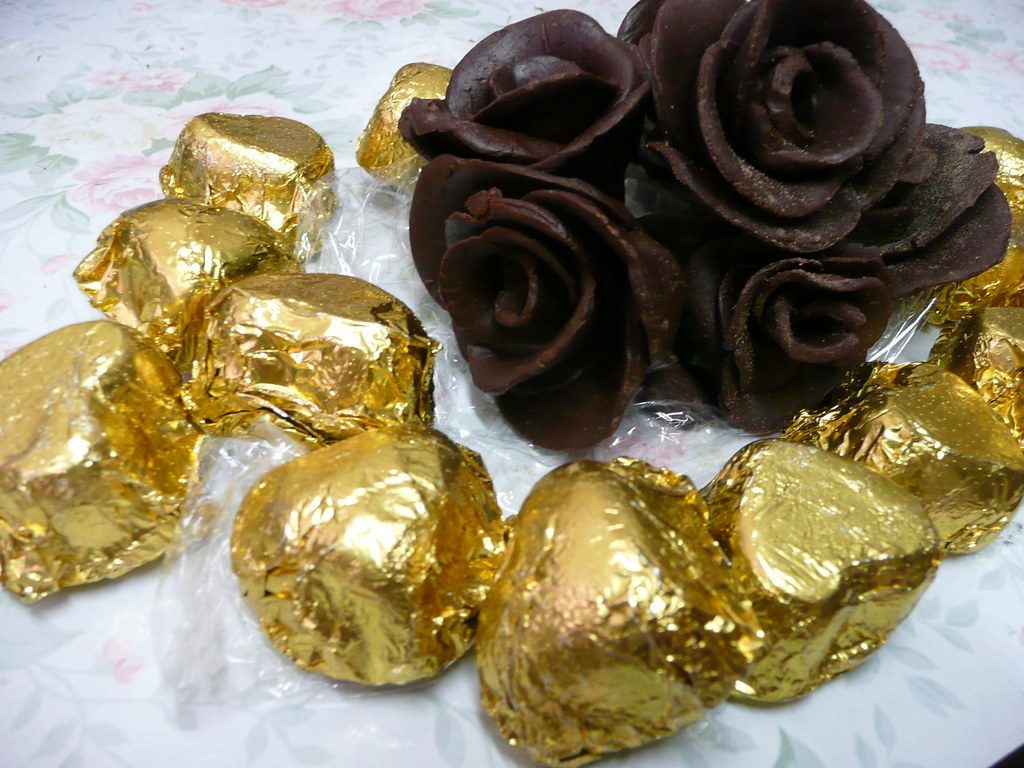The love affair between chocolate and romance dates back to the time of the Mayans, who used cacao beans in marriage ceremonies. This early association of chocolate with love and commitment laid the groundwork for the deep-rooted connection we see between chocolate and romance today. For example, in 1382, the renowned English poet, Geoffrey Chaucer, penned a poem that linked the celebration of Valentine’s Day with the gifting of chocolate.This was perhaps the first recorded association of chocolate with Valentine’s Day, a tradition that continues to this day.
Chocolate’s popularity and association with romance further spread in Europe due to the establishment of chocolate houses in London and Versailles. These establishments were the social hubs of their time, akin to modern cafes, where people would gather to enjoy a cup of hot chocolate and engage in conversations. Marie Antoinette, the queen of France, even had her personal chocolate maker, which significantly contributed to the popularity and romantic perception of chocolate in Europe. The widespread consumption of chocolate in these social settings further reinforced its connection with romance, creating a cultural tradition that has been passed down through the generations.
Richard Cadbury and the Tradition of Giving Chocolates for Valentine’s Day



The tradition of giving chocolates as gifts on Valentine’s Day has its roots in the actions of a man named Richard Cadbury. In 1861, Cadbury, who was part of the well-known Cadbury Chocolate Company, started packaging chocolates in heart-shaped boxes adorned with romantic symbols. This innovative packaging design was not only visually appealing but also played a significant role in associating chocolates with the expression of love and affection.
Heart-shaped boxes of chocolates quickly became a popular gift for Valentine’s Day and started a tradition that continues even today. Every Valentine’s Day, countless lovers across the globe express their feelings by gifting their partners Cadbury’s heart-shaped boxes of chocolates. This tradition is a testimony to the lasting influence of Richard Cadbury on the way we celebrate love and romance today. These heart-shaped boxes not only contain delicious chocolates but also symbolize the sweet feelings of love that are associated with Valentine’s Day.
The Impact of Heart-Shaped Chocolate Boxes
The tradition of gifting heart-shaped boxes of chocolates was further popularized in the 1920s by chocolatier Russell Stover. These beautifully packaged chocolates captured the hearts of many and soon became a symbol of Valentine’s Day. The heart-shaped chocolate box is now an iconic representation of love and romance, thanks to its intricate design and the delectable chocolates it contains.
The popularity of these heart-shaped boxes has not diminished over the years. In fact, they continue to be a sought-after gift on Valentine’s Day. Their enduring appeal lies not just in the chocolates they contain, but also in the romantic symbolism they represent. Gifting a heart-shaped box of chocolates is a simple yet profound way of expressing one’s love and affection. This tradition demonstrates the powerful influence of chocolate on Valentine’s Day and its role in expressing love and romance.
The Influence of Chocolate Sales on Valentine’s Day
Valentine’s Day is a significant occasion for the chocolate industry, with over 58 million pounds of chocolate being bought in North America to celebrate this day of love each year. The tradition of giving chocolates on Valentine’s Day greatly impacts the economy, contributing to a significant spike in chocolate sales during this period. One of the key players in this industry is Russell Stover, which has become the number one boxed-chocolate company in the US, thanks, in part, to their affordable and accessible products.
The economic impact of chocolate on Valentine’s Day is not limited to just sales figures. The demand for chocolates during this period also creates job opportunities in manufacturing, packaging, and retail. It also encourages innovation in the industry, with chocolatiers constantly creating new and unique products to meet the evolving tastes and preferences of consumers. The significant economic influence of chocolate on Valentine’s Day is a testament to its enduring popularity and its role as a preferred gift on this special day.
The Processing of Chocolate



The journey of chocolate from the cacao tree to a finished chocolate bar involves a complex process of fermentation, drying, roasting, and shelling. The heart of all chocolate is the chocolate liquor, a pure chocolate extract made from cocoa powder and cocoa butter. This chocolate liquor is the base from which all types of chocolate are made.
Different types of chocolate have varying ratios of chocolate liquor and other ingredients. For instance, milk chocolate contains less chocolate liquor and more added sugars and milk solids, while dark chocolate contains a higher percentage of chocolate liquor and fewer added sugars. These variations result in different flavors and textures, catering to the diverse tastes of chocolate lovers. The process of making chocolate is a labor of love, one that results in a delicious treat that brings joy and pleasure to many, especially on Valentine’s Day.
The Health Benefits of Chocolate
Beyond its delicious taste, chocolate also provides potential health benefits due to the rich nutritional profile of cacao beans. These beans are rich in antioxidants and nutrients that contribute to overall health. Dark chocolate, in particular, has been linked to a variety of health benefits due to its high content of chocolate liquor and fewer added sugars.
Dark chocolate is packed with antioxidants that have been linked to lower blood pressure, reduced risk of stroke and heart disease, and improved blood flow. These potential health benefits make dark chocolate not just a delicious treat, but also a beneficial addition to a balanced diet. However, it’s important to remember that these benefits are most pronounced with high-quality dark chocolate, consumed in moderation, and as part of a balanced diet and active lifestyle.
Chocolate and Mood Enhancement
- Chocolate contains chemicals like phenylethylamine and theobromine, which can improve mood and promote feelings of happiness.
- Eating chocolate can lead to the release of endorphins in the brain, creating a sense of euphoria and happiness.
- Some studies suggest that chocolate cravings may be related to deficiencies in magnesium and iron.
- Chocolate, particularly dark chocolate, is rich in these nutrients, and consuming it may help to alleviate these deficiencies.
- In this way, enjoying chocolate can contribute to not just a positive emotional state but also overall well-being.
- The mood-enhancing properties of chocolate make it a natural choice for celebrations of love like Valentine’s Day, adding to the joy of the occasion.
Chocolate as an Aphrodisiac
Chocolate has long been considered an aphrodisiac, believed to stimulate desire and increase romantic feelings. This belief may be tied to the chemicals it contains, which can enhance mood and induce feelings of pleasure and euphoria. The association of chocolate with the divine, given the cocoa tree’s moniker as the “food for the Gods,” adds to its reputation as a romantic treat.
The pleasure of eating chocolate, with its luxurious texture and rich, complex flavors, can indeed enhance romantic experiences. The act of sharing a piece of chocolate with a loved one can be an intimate and sensual experience that strengthens the romantic bond. The belief in chocolate as an aphrodisiac, combined with its ability to stimulate pleasure and happiness, further cements its role in celebrations of love and romance like Valentine’s Day.
Chocolate in Popular Culture
In popular culture, chocolate has always been associated with seduction and indulgence. From the iconic episode of I Love Lucy featuring a chocolate factory assembly line to romantic scenes in movies involving chocolates, the portrayal of chocolate in popular culture reflects its allure and connection to romance.
In film and television, chocolates often serve as a symbol of love, seduction, and indulgence. They are frequently used in romantic scenes, further reinforcing the association between chocolate and romance. This portrayal of chocolate in popular culture contributes to its popularity as a Valentine’s Day gift, enhancing its role in the celebration of love.
Chocolate Consumption in The US
The tradition of giving chocolates on Valentine’s Day significantly contributes to the overall consumption of chocolate in the US. The high demand for chocolates during this season is a testament to the enduring appeal of this delicious treat. From heart-shaped chocolate boxes to homemade chocolate desserts, chocolate is a staple of Valentine’s Day celebrations.
The high consumption of chocolate in the US is also a reflection of its cultural significance. As a nation, we turn to chocolate in times of celebration, comfort, and love. It is a symbol of indulgence, pleasure, and romance. The role of chocolate in American culture goes beyond its delicious taste; it is a sweet thread woven into our collective experiences and celebrations, making life’s moments even more memorable.
Creative Ways to Incorporate Chocolate into Valentine’s Day Celebrations
Chocolate can be creatively incorporated into Valentine’s Day celebrations in various ways. One traditional way is to give heart-shaped chocolates as a gift to express love and affection. This simple gesture has been a long-standing tradition that continues to bring joy to many on this special day.
For those who love to bake, preparing homemade chocolate desserts like chocolate-covered strawberries or a decadent chocolate cake can be a sweet way to celebrate Valentine’s Day. These desserts not only offer a delicious treat but also add a personal touch to the celebration, showing the effort and care put into making the day special.
Planning a romantic chocolate-themed date night, such as a chocolate tasting or fondue experience, can also be a unique and fun way to celebrate Valentine’s Day. This can be a fun and interactive way to enjoy different types of chocolate while spending quality time together. Additionally, incorporating chocolate into Valentine’s Day decorations such as chocolate-scented candles or chocolate-themed centerpieces can create a festive and indulgent atmosphere for the celebration.
Conclusion
The historical association of chocolate with love and romance, along with Richard Cadbury’s contribution, has solidified the tradition of giving chocolates on Valentine’s Day. The impact of chocolate sales during this holiday is significant, and heart-shaped chocolate boxes have become an iconic symbol of Valentine’s Day. Chocolate not only brings joy and pleasure but also offers potential health benefits, making it an ideal treat for Valentine’s Day celebrations. Whether enjoyed as a romantic gift, mood enhancer, or indulgent treat, chocolate continues to hold a special place in Valentine’s Day traditions. Its role in our celebrations of love is a testament to its enduring appeal and its power to add sweetness to our lives.

